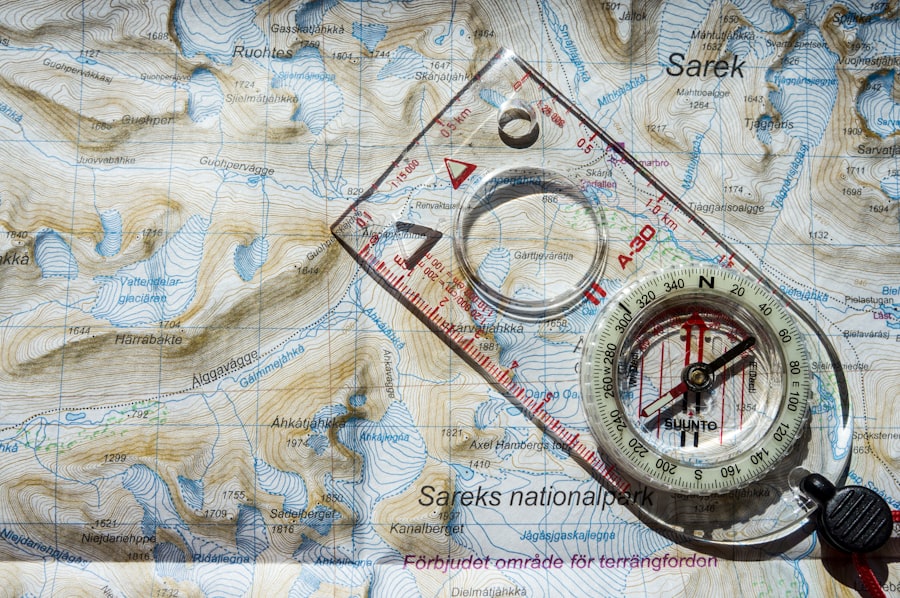Population density is a critical demographic metric that reflects the number of individuals living per unit area, typically expressed in persons per square kilometre. In Thailand, this figure is particularly significant due to the country’s unique geographical, cultural, and economic landscape. As of the latest estimates, Thailand‘s population density stands at approximately 135 individuals per square kilometre, with considerable variation across different regions.
This density is not merely a statistic; it encapsulates the complexities of urbanisation, resource allocation, and social dynamics within the nation. Thailand’s population density is influenced by a myriad of factors, including historical migration patterns, economic opportunities, and environmental conditions. The interplay of these elements has led to a concentration of people in urban areas, particularly in Bangkok, which is one of the most densely populated cities in the world.
Understanding the nuances of population density in Thailand requires an exploration of these underlying factors and their implications for society as a whole.
Summary
- Thailand has a population density of around 135 people per square kilometre, with the highest concentration in urban areas.
- Factors affecting population density in Thailand include economic opportunities, infrastructure development, and government policies.
- Urban areas in Thailand have a higher population density compared to rural areas, leading to challenges in resource allocation and infrastructure development.
- High population density in Thailand puts pressure on infrastructure and resources, leading to issues such as traffic congestion and environmental degradation.
- The Thai government has implemented policies and initiatives to manage population density, including urban planning and rural development programs.
Factors Affecting Population Density in Thailand
Several factors contribute to the population density observed in Thailand, with urbanisation being one of the most significant. Over the past few decades, there has been a marked shift from rural to urban living, driven by the pursuit of better employment opportunities and improved living standards. This migration has resulted in cities like Bangkok experiencing explosive growth, with its population swelling to over 10 million residents.
The allure of urban centres is further enhanced by the availability of services such as education, healthcare, and entertainment, which are often lacking in rural areas. Another critical factor influencing population density is economic development. Thailand’s economy has undergone substantial transformation since the late 20th century, transitioning from an agrarian base to a more diversified economy that includes manufacturing and services.
This economic shift has attracted individuals from rural regions seeking jobs in factories and service industries concentrated in urban areas. Consequently, regions with robust economic activity tend to experience higher population densities as people flock to these hubs in search of better livelihoods.
The distribution of the population between urban and rural areas in Thailand reveals stark contrasts that are emblematic of broader socio-economic trends. Urban areas, particularly Bangkok and its surrounding provinces, are characterised by high population densities and a diverse demographic mix. In contrast, rural regions often exhibit lower population densities, with communities centred around agriculture and traditional livelihoods.
As of recent data, approximately 51% of Thailand’s population resides in urban areas, a figure that continues to rise as urbanisation accelerates. The implications of this urban-rural divide are profound. Urban centres are often better equipped with infrastructure and services, leading to improved quality of life for residents.
However, this concentration also places immense pressure on urban infrastructure, resulting in challenges such as traffic congestion, pollution, and inadequate housing. Conversely, rural areas face their own set of challenges, including limited access to healthcare and education, which can perpetuate cycles of poverty and hinder development. The disparity between urban and rural populations necessitates targeted policies to address these imbalances and promote equitable growth across the country.
Impacts of Population Density on Infrastructure and Resources

The high population density in urban areas of Thailand has significant implications for infrastructure and resource management. As cities expand and populations grow, the demand for essential services such as transportation, water supply, waste management, and housing increases exponentially. In Bangkok, for instance, the public transport system struggles to keep pace with the rising number of commuters, leading to chronic traffic congestion that affects productivity and quality of life.
Water scarcity is a pressing issue in many urban centres due to over-extraction and pollution of water sources. The rapid urbanisation has also led to increased waste generation, straining waste management systems that are often ill-equipped to handle the volume produced by burgeoning populations.
The environmental impact is further exacerbated by air pollution from vehicles and industrial activities, posing health risks to residents and necessitating urgent policy interventions.
Government Policies and Initiatives to Manage Population Density
In response to the challenges posed by population density, the Thai government has implemented various policies aimed at managing urban growth and promoting sustainable development. One notable initiative is the promotion of decentralisation policies that encourage economic development in rural areas. By investing in infrastructure and services outside major urban centres, the government aims to alleviate pressure on cities while fostering balanced regional development.
Additionally, urban planning initiatives have been introduced to enhance public transport systems and improve housing conditions in densely populated areas. The Bangkok Mass Transit System (BTS) and the Metropolitan Rapid Transit (MRT) are examples of efforts to provide efficient public transport options that can reduce traffic congestion and improve air quality. Furthermore, policies aimed at increasing green spaces within urban environments are being pursued to enhance livability and mitigate environmental impacts associated with high population densities.
Comparison of Population Density in Thailand with Other Countries
When comparing Thailand’s population density with other countries in Southeast Asia and beyond, it becomes evident that it occupies a unique position. For instance, Singapore boasts one of the highest population densities globally at over 8,000 individuals per square kilometre due to its small land area combined with a large population. In contrast, countries like Myanmar or Laos exhibit much lower densities due to their vast land areas relative to their populations.
Thailand’s density is more comparable to nations like Malaysia or Vietnam, where urbanisation trends are similarly pronounced but vary in pace and scale. The differences in population density across these countries can be attributed to various factors including economic development levels, historical migration patterns, and government policies regarding urban planning and rural development. Such comparisons highlight the need for tailored approaches to managing population density that consider each country’s unique context.
Future Trends and Projections for Population Density in Thailand

Looking ahead, several trends are likely to shape the future of population density in Thailand. Urbanisation is expected to continue its upward trajectory as more individuals migrate to cities in search of better opportunities.
This shift will necessitate innovative solutions to address the challenges associated with increased density. Additionally, demographic changes such as an ageing population will further complicate the landscape of population density management. As the proportion of elderly individuals rises, there will be increased demand for healthcare services and age-friendly infrastructure within urban settings.
Policymakers will need to consider these demographic shifts when planning for future urban development and resource allocation.
Conclusion and Recommendations for Managing Population Density in Thailand
To effectively manage population density in Thailand, a multifaceted approach is essential. Policymakers should prioritise sustainable urban planning that incorporates green spaces and efficient public transport systems while also addressing housing shortages through affordable housing initiatives. Furthermore, enhancing rural development through targeted investments can help mitigate the pressures on urban centres by creating viable economic opportunities outside major cities.
Collaboration between government agencies, local communities, and private sectors will be crucial in implementing these strategies effectively. By fostering inclusive dialogue and participatory planning processes, stakeholders can work together to create solutions that balance growth with sustainability. Ultimately, addressing the challenges posed by population density will require a commitment to long-term planning and innovative thinking that prioritises both current needs and future generations.
FAQs
What is population density?
Population density is a measurement of population per unit area, usually per square kilometre or square mile. It is calculated by dividing the population of a region by its total land area.
What is the population density of Thailand?
As of 2021, the population density of Thailand is approximately 135 people per square kilometre.
How does Thailand’s population density compare to other countries?
Thailand’s population density is relatively high compared to many other countries, especially those with large land areas. However, it is lower than some of the most densely populated countries in the world.
What factors contribute to Thailand’s population density?
Thailand’s population density is influenced by factors such as urbanization, agricultural practices, and geographical features. The central and northern regions of the country tend to have higher population densities due to fertile land and economic opportunities.
How does population density impact Thailand’s infrastructure and resources?
High population density can put pressure on infrastructure and resources, leading to challenges in providing adequate housing, transportation, healthcare, and education. It can also impact the availability of natural resources and environmental sustainability.
What are the implications of Thailand’s population density for urban planning and development?
Thailand’s high population density requires careful urban planning and development to ensure sustainable growth, efficient use of land, and provision of essential services to its residents. This includes considerations for transportation, housing, and public amenities.


